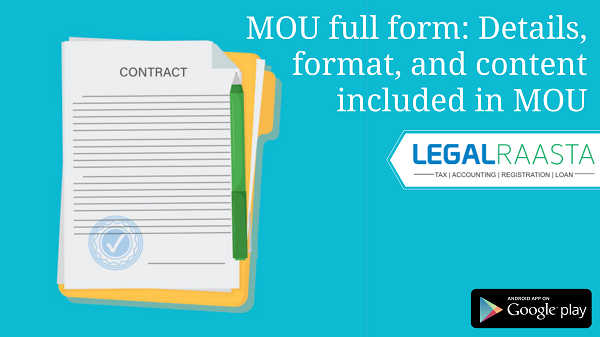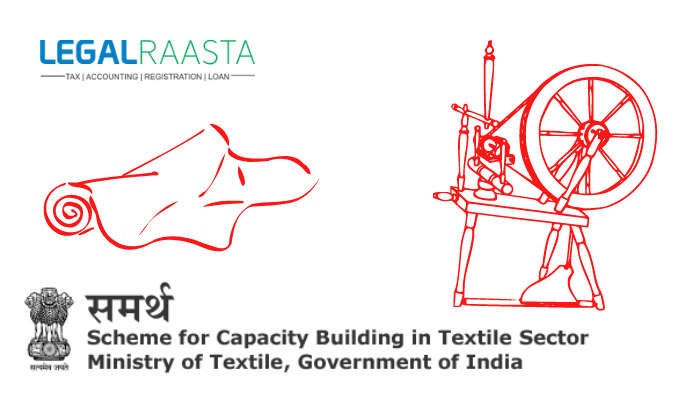MOU full form: Details, format, and content included in MOU
An MOU full form is a memorandum of understanding. A formal agreement between two or more parties is a memorandum of understanding (MOU or MoU). To create official relationships, companies and organizations may use MOUs. In multinational international relations, MOUs are common as they take a short time to ratify and can be kept confidential, unlike treaties. To alter current legal treaties, MOUs can also be used.What is a Memorandum of Understanding (MOU) in India?
For a non-binding contract, the term Memorandum of Understanding is generally used, which defines the intention of two persons or companies to reach an agreement. An MoU in India is, therefore, also mentioned because of the Letter of Intent. The 'Memorandum of Understanding' is the justification for this agreement. As it defines the scope and purpose of the talks, the MOU can be seen as the starting point for negotiation. In international treaty agreements, such memorandums are most commonly used, but can also be seen in high-stakes corporate transactions such as merger talks. Though it is mostly not a legally binding contract, it includes all important information and has a high degree of mutual respect and seriousness. It can be viewed as the first step towards a legal contract.When to Use the Understanding Memorandum?
If they need something better than a verbal commitment and less than a formal contract, the parties have chosen to enter into the MOU. It's just a formal pact of severity between parties. If the parties decide to establish a partnership, which has serious consequences, a memorandum of understanding can still be a step in the direction of a formal contract. Non-profits could also sign it because they are considered less threatening than the formal agreement.Private Sector or Private Enterprises
The MOU usually acts as a non-binding agreement in commercial and private sector transactions, which contains the obligations and conditions for each party and the terms and details of the agreement. It is done without a written contract or legally enforceable contract being created.Government and Public Affairs
Inside government agencies, MOUs may be used; in the United Kingdom, for example, the document acts as an arrangement between parts of the Crown.International Public Law
MOUs fall under the category of treaties at the international level and must be reported in the United Nations Treaty Collection. The intent of the parties and the positions of the signatories must be presented in order to decide whether or not the agreement is legally binding (especially for treaties). In deciding the legal meaning of the contract, the language used in the agreement also plays a part.Objective
The purpose of a typical MOU is to lay out what the parties in a formal relationship or partnership have agreed to. It is better than a verbal commitment, is documented, and if any of the party digresses from the path set out in the document, it can be referred to. It is difficult to settle disputes even mutually during the arrangement in the absence of an MOU, putting the achievement of the end goal in risk.Method of MOU
The process of obtaining a finalized MOU is initiated by the participating parties planning their own MOU, pursuing their ideal goals and expected results, the main results on which they are not willing to compromise, and what the respective party feels the other stakeholders can anticipate and gain from the MOU. It acts as the initial stance of the group before the negotiation starts.What to add an MOU format that is Memorandum of Understanding Format?
Following are the content of the MOU:- Objective or intent of entering the MOU
- Every party's obligations
- Meetings and monitoring modalities
- Professional and financial support
- Financial consideration, if any, of the transaction involved
- Responsible Management Guy
- MOU's Duration
- Clause on Confidentiality
- Conditions leading up to MOU termination
- Extension Probability
- Communication Forms
- Clause of severability
- Clause on Arbitration
- Clause for Indemnity
Advantages of MOU
- A formal document describing the responsibilities of all the parties involved in the roles
- Better than commitments in verbal terms.
- In the case of disputes, it provides a good reference point.
- Lays out the intent toward a common goal of all parties.
- A legally binding contract is convenient and easy to frame.
- It is easier and less dangerous than a formal, legally binding contract.
- It makes it possible to avoid obligations under international law when MOUs are signed by countries.










